Materials #
When you’re in school, you have relatively limited resources. Here are a few families of materials and fabrication methods that you may be able to use.
- cardboard and foamcore + X-Acto knife and hot glue
- 3D-printed PLA or TPU, possibly with heat-set inserts
- laser-cut acrylic, plywood, MDF or chipboard
- construction lumber + miter saw, band saw, and table saw
- 80/20 structural aluminum framing + miter saw and drill press
- sheet metal + tin snips, jump shear, and box brake
- Aluminum or steel + lathe and mill
Once you get to industry, you have more choices– LOTS MORE.
Aluminum #
There are at least 530 different aluminum alloys. For only $150, you can buy the ANSI H35.1 standard and read all 12 pages (includes appendix).
Alternatively, here are a few guidelines that will help you get your bearings. (That’s almost a pun, but bearings are made of 440C steel, not aluminum.)
| Alloy | Composition | Most common example |
|---|---|---|
| 1xxx | pure (>99%) aluminum | 1100 |
| 2xxx | alloyed with copper | 2024 |
| 3xxx | alloyed with manganese | 3003 |
| 4xxx | alloyed with silicon | ??? |
| 5xxx | alloyed with magnesium | 5052 |
| 6xxx | alloyed with Mg2Si | 6061 |
| 7xxx | alloyed with zinc | 7075 |
-
1100: easy to form, cheap
-
3003: easy to form, cheap, but a little stronger
-
5052: strong, great corrosion resistance, not heat-treatable
-
6061: strong, good corrosion resistance, heat-treatable, machines well
-
2024: very strong, still formable
-
7075: even stronger, less formable, better corrosion resistance
-
7075-T6: the most bad-ass aluminum
Reminder about fatigue: aluminum fatigues; steel doesn’t.
Steel #
Steel = iron + carbon (0.04% - 1.5%)
You can read about different steel alloys in the SAE A29 standard, only $56 for 17 pages (almost 4x cheaper than the H35.1 aluminum standard!).
Generally, the last two digits of the alloy designation are the carbon concentration by mass in hundredths of a percent.
| Alloy | Composition | Example |
|---|---|---|
| 1xxx | plain carbon steels | 1010, 1018 |
| 2xxx | nickel | |
| 3xxx | nickel-chromium | |
| 4xxx | molybdenum | 4130 (gears), 4140 (stiffer, harder) |
| 5xxx | chromium | 5160 |
| 6xxx | chromium-vanadium | |
| 7xxx | tungsten | |
| 8xxx | nickel-chromium-molybdenum | |
| 9xxx | silicon-manganese |
Tool steel #
| Designator | Description |
|---|---|
| A2 | Air hardening |
| M2 | Machine tool cutters |
| O1 | Oil hardening |
| S2 | Shock resistant |
Materials gallery #
Here’s what these materials look like.
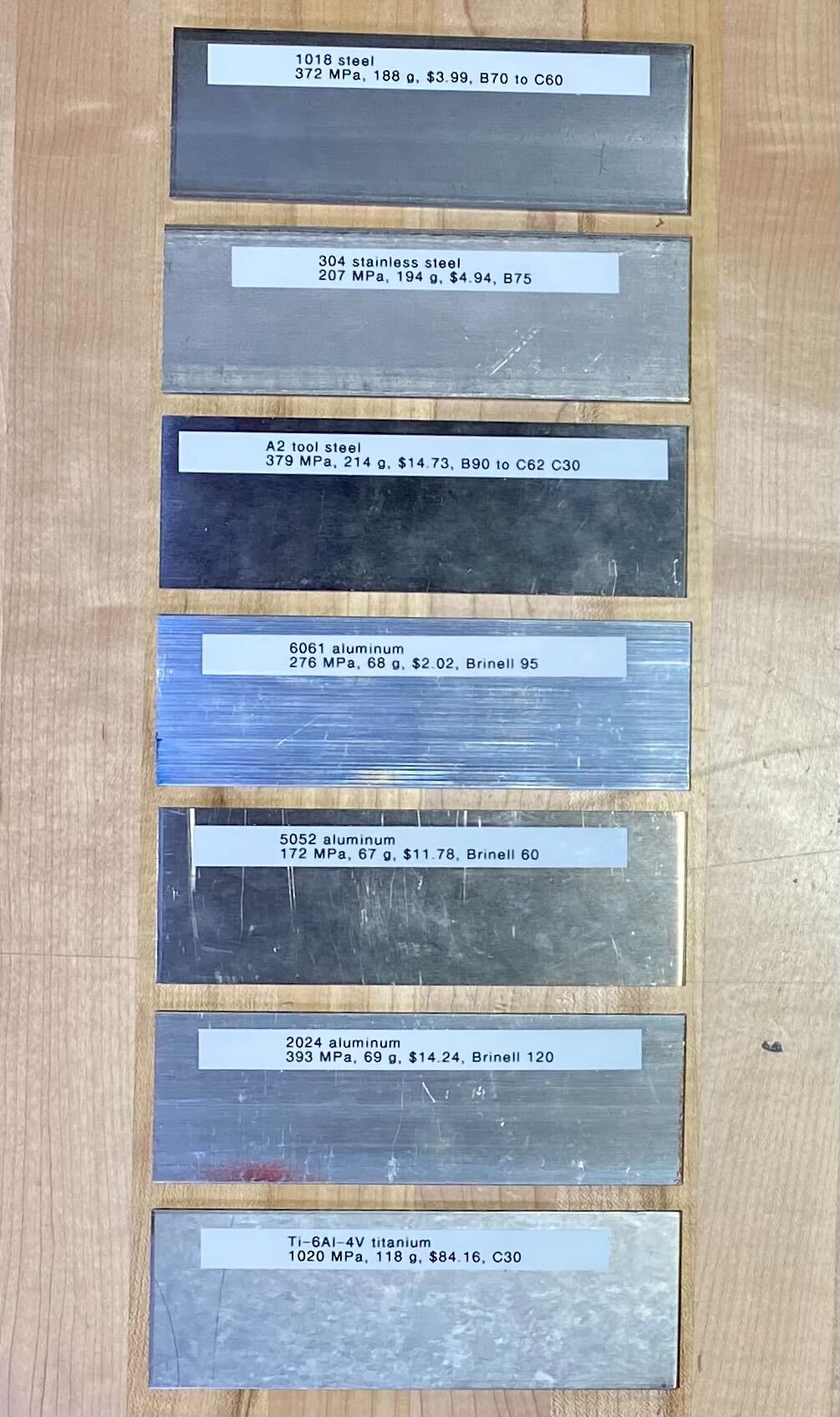
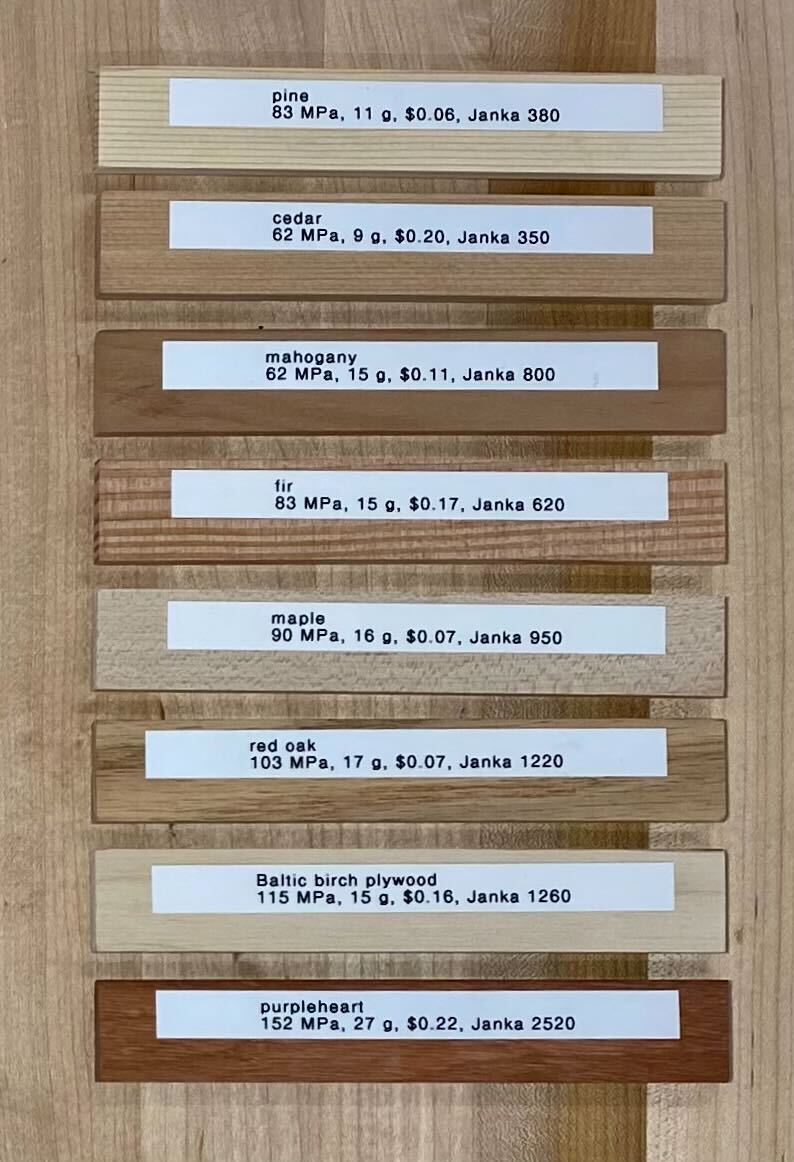
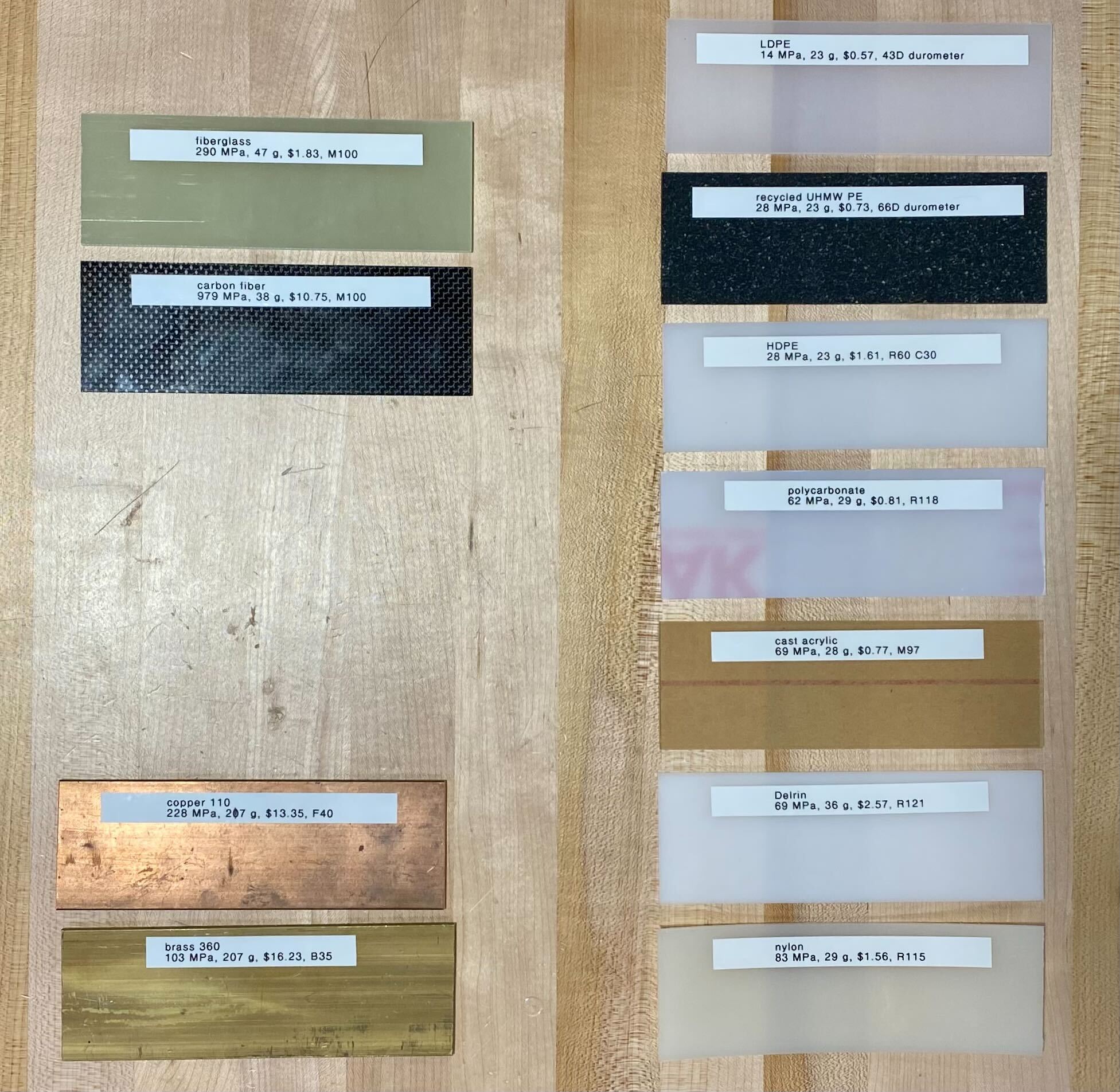
Yield strength tradeoffs #
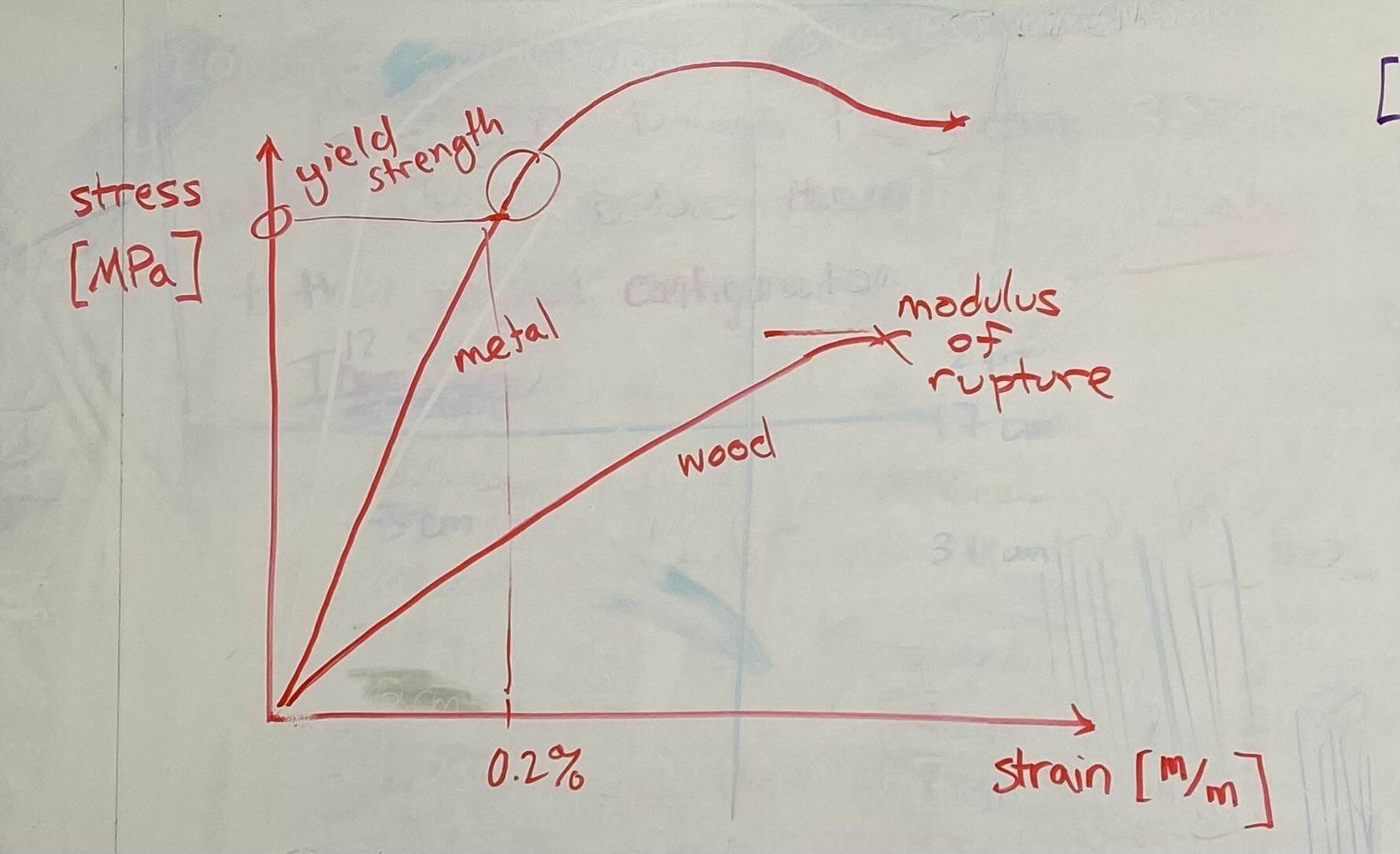
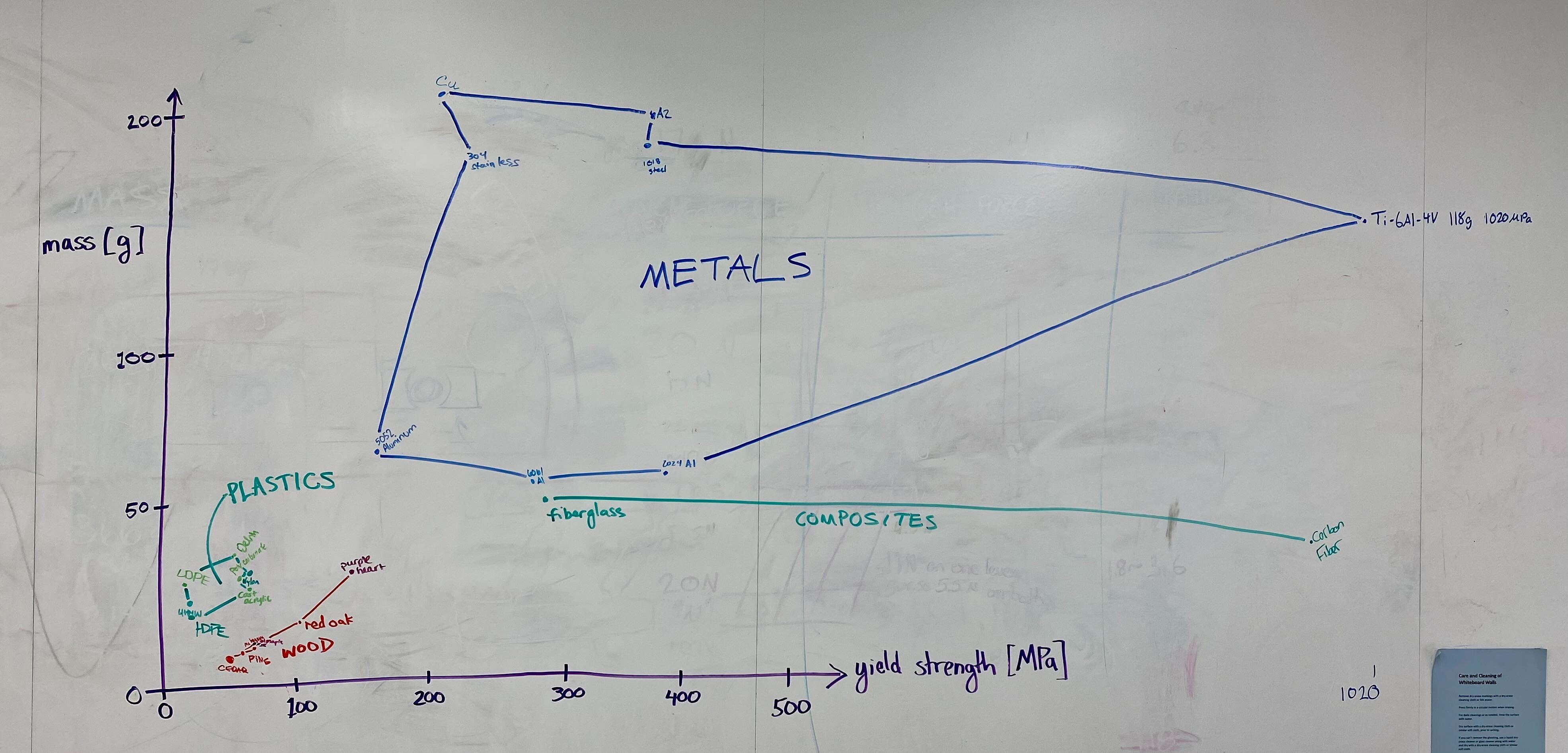
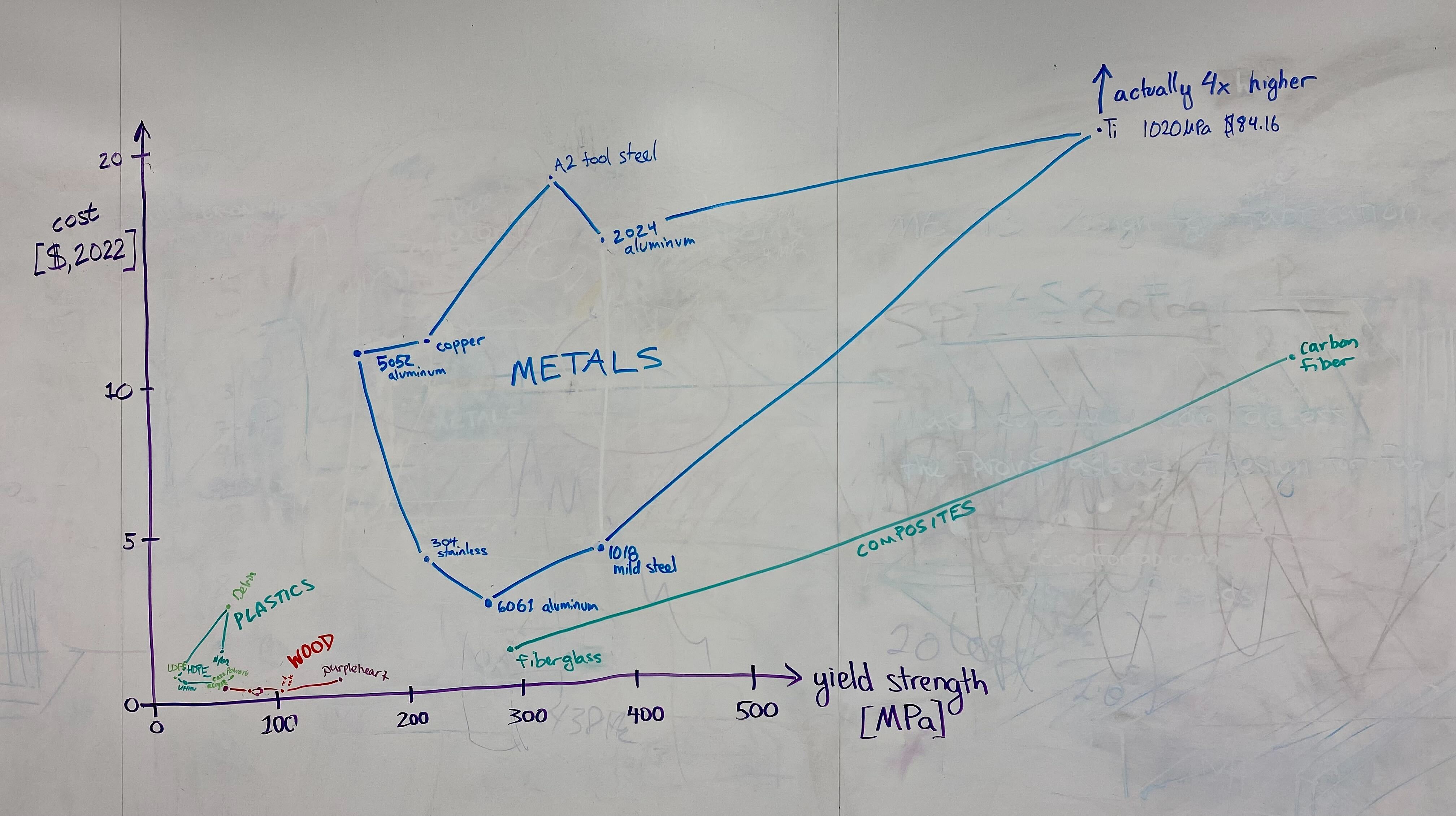
Notes on material usage, based on notes taken by Ananya Ram (thanks!) #
Plastics: #
- LDPE → milk jug material, cheap
- HDPE → stronger, terrible for the environment, can’t really be machined
- MDPE → recycled material, still terrible for the environment
- Polycarb sheet → like acrylic, but can absorb a lot of energy (high energy toughness)
- Acrylic → can’t machine because it shatters~~
- Delrin → optimized for machining
- Nylon → super strong plastic, some are stronger than steel
Composites #
- Fiberglass → boats, super stiff
- Carbon fiber → also super strong, $$,
Woods: good for lightweight structures #
- Pine → cheapest, lightest, crappiest material
- Cedar → even lighter than pine, eh about everything else. Smells good briefly…
- Fir → Pine 2.0, stiff, tables and long-term stuff
- Mahogany → looks nice, fancy furniture
- Maple → hard, for cutting board
- Red Oak → heavier means stronger, and it’s very strong, good for floors
- Baltic Birch Plywood → plywood = alternating grain
- Purple Heart → one of the densest woods that you can just buy
Metals, usually alloys: #
- Copper → thermally conductive, expensive, not an alloy
- 1018 Steel → crappy steel, still expensive (nice but heavy)
- Stainless Steel 304 → same as mild steel, non-magnetic, doesn’t rust (nice but heavy)
- A2 Tool Steel → air-hardened steel, very uniform, used for knives (nice but heavy)
- 6061 Aluminum → cheapest aluminum engineers use
- 5052 Aluminum → easily formed or welded
- 2024 Aluminum → used for airplanes etc. extra stiff allow
- Brass → copper + zinc(?); mostly used for aesthetic
- Titanium → $84, stiffest material